
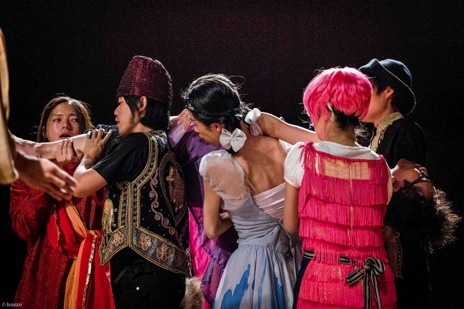
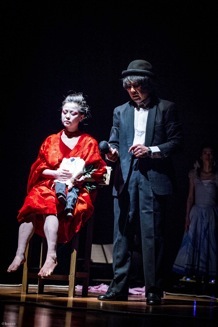
終わりはいつも終わらないうちに終わっていく(ダイジェスト)
The end does not end (digest)

終わりはいつも終わらないうちに終わっていく
2015年10月20日 東京・両国 シアターX(カイ)
シベリアのアルグン川沿いに暮らす狩猟遊牧民族の20世紀を、死者たちが歌う。
曾根崎川の死者たちが川を往く。かつて百済川とよばれた平野川。新潟の海。日本海。
北東アジアを渦巻く、架空のフォークオペラ。歌と逆に、歌に。
構成・演出・作曲:河崎純
演奏:小沢あき(ギター) 神田晋一郎(アナログシンセ) 河崎純(コントラバス) 三木聖香(歌)
出演:海老沢栄(人形遣い) 亞弥(舞踏) 三浦宏予(ダンス) 都丸永子(ダンス)
阿久津智美(ダンス) 津田健太郎 小鷲順子 吉松章 アイケイイチ 井内友理恵
白鳥加奈子 坪井聡志 向隆史 小野良太
演出助手:長友建太朗 見米大祐 三行英登 協力:青木純一
主催:シアターX(カイ)
The end does not end
20 October 2015 at Theater X, Tokyo
Ghosts are singing about 20th century of hunting and nomadic people. That tribe has lived in Siberia, along right side of Argun River. They call themselves “Evenki”.
Other Ghosts who lost their lives at Sonezaki River are walking along rivers. Can they arrive at the sea? Or can they not arrive at anywhere? This plot is based on Japanese traditional Ningyo joruri play Shinju Ten-no-amijima. It is a famous story of a lovers’ suicide that was written by Chikamatsu Monzaemon in the Edo period.
This fictitious Northeast Asia folk-opera directed and composed by Jun Kawasaki was realized by singer, dancers, actors, and Japanese traditional puppet operator.
“Be counter to songs, but to songs”. It is a maxim that was left by Japanese poet Tozaburo Ono. The verbal activity begins with conflict with impossibility of making songs. This is a reactionary route to opera.
Directed and composed by Jun Kawasaki
Guitar: Aki Ozawa Analog synthesizer, Piano: Shinichiro Kanda
Doublebass: Jun Kawasaki Vocal: Seika Miki
Marionette operator: Sakae Ebisawa Butoh: Aya
Dance: Hiroyo Miura, Satomi Akutsu, Nagako Tomaru
Sung and acted by Kentaro Tsuda, Junko Kowashi, Akira Yoshimatsu, Xeiici Ai,
Yurie Inouchi, Kanako Shiratori, Satoshi Tsuboi, Takashi Mukai, Ryota Ono
Assistant director: Kentarou Nagatomo, Daisuke Mikome, Hideto Miyuki
Supported by Junichi Aoki
Organized by Theater X
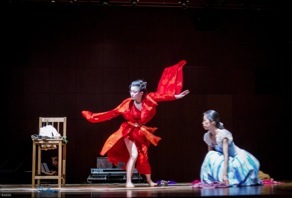
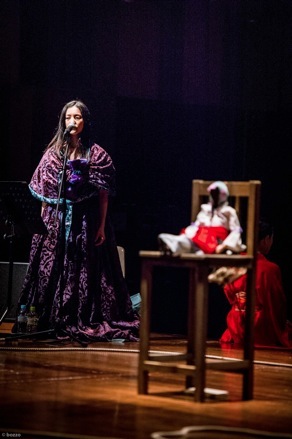
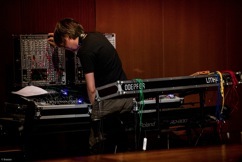
photo: bozzo
photo: bozzo
photo: bozzo


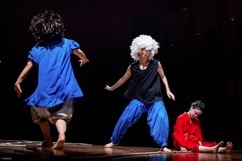
Projects
© 2015-2017 Jun Kawasaki, Music and Poetic Drama Laboratory